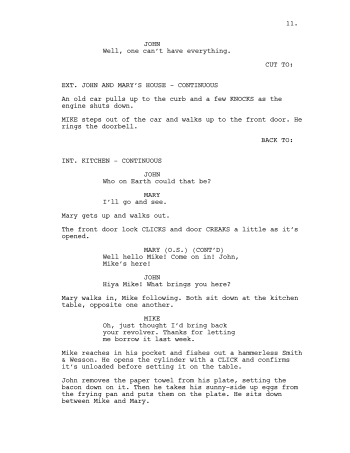One key element to keep in mind when adapting your book into a film is the three-act structure, which is a fundamental element of successful movies. It consists of a beginning, middle, and end, each serving its own purpose.
The first act introduces the characters, specifically the protagonist or protagonists. It also establishes the main conflict of the story, namely, what the protagonist wants to achieve or obtain and what obstacles prevent them from doing so. Usually, these obstacles take the form of the antagonist or a group of individuals opposing the protagonist. This first act also includes the Inciting Incident, an event that sets the protagonist’s life on a different path or forces them to change their initial plans. The Inciting Incident is what gets the film moving. This initial act is typically under 20 pages, with fewer pages being preferable.
The second act is the longest, around 50-60 pages, and is often the most challenging to write. In this act, you introduce obstacles that stand in the protagonist’s way. These obstacles should become increasingly difficult until they lead to an inevitable, but not always predictable, climax.
The third act presents the ultimate conflict or climax of the story. It should resolve the story in one way or another, with the protagonist either achieving their objective or failing to do so. This act is usually 10-20 pages long.
The specific page lengths for each act are determined by the general rule that one page of a screenplay equates to one minute of screen time.
Unlike books, which are divided into chapters, the basic unit of a screenplay is a scene. A series of connected scenes are grouped together to form what is known as a sequence.
If your book neatly fits into this three-act structure, that’s great. It will be easier, though not necessarily easy, to adapt. However, if it doesn’t, you may need the assistance of a professional screenwriter to help you adapt your book into a film.
While you may not want to confine your book to this structure, it is necessary to do so when adapting it into a screenplay. Scripts that do not follow the three-act structure are often dismissed without further consideration.
Manuel Marino is a seasoned Senior Producer, Music Composer, and Artist with over a decade of experience. He specializes in branded entertainment across various mediums, including video games, films, and advertising campaigns. With 20+ years as a game music composer, Manuel has worked on numerous platforms, creating diverse orchestral soundtracks. HIRE ME


 Manuel is a passionate, driven, and techsavvy AV technician,
Manuel is a passionate, driven, and techsavvy AV technician, 









